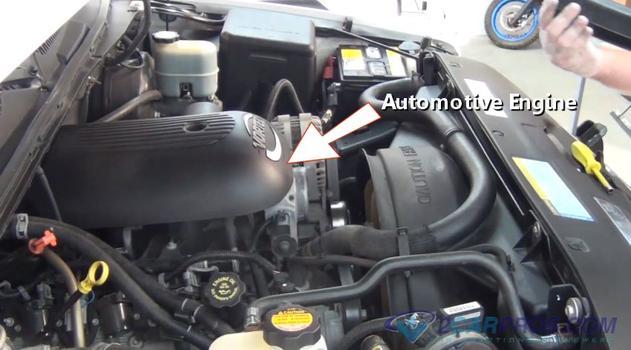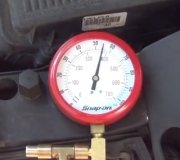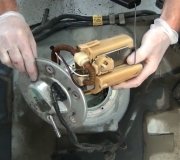I'm confident the coil is fine based on how well the engine runs. What's at issue is the voltage that powers it. I think you're going to have to find an old-style pointer-type voltmeter. When the points are closed, current will flow through the dropping resistor, coil primary, and points to ground. Some voltage will be dropped across the resistor, so you will see around 9-10 volts on the coil's positive terminal. The dropping resistor limits current to reduce arcing points contacts. When the points are open, no current flows in the circuit and no voltage is dropped across the resistor, so you will read full system voltage on the coil's positive terminal. Voltage on the coil's positive terminal will bounce between, lets say 10 volts, (points closed), and, ... Oh, ... 14 volts when the generator is operating. A digital voltmeter snaps a reading, analyzes it, then displays it and starts over again. Those snapshots will bounce between the two voltages and be impossible to read. A pointer-type voltmeter will be unable to bounce around that fast so it tends to smooth out the reading.
Here's a couple of things you might try. Turn on the ignition switch, engine off, and measure the voltage on the coil positive terminal. (These things CAN be done with a digital voltmeter). If it reads full battery voltage, turn the engine by hand or bump the starter until the voltage goes down. When the points close, voltage on the coil will go to around 9 or 10 volts. Remember that value. That is the normal operating voltage and will be close to the battery's voltage during cranking.
Next, use a jumper wire to ground the negative coil terminal. That will keep the engine from starting. Now measure the coil's positive voltage again while cranking the engine. It must be near the voltage you found in the last step. The dropping resistor lowers voltage at the coil by a few volts. The battery voltage also drops a few volts during cranking. If you START with only 10 battery volts, then drop some more across the resistor, there will only be around 6 volts running the coil during cranking. That will result in a really weak spark, possibly not even strong enough to jump the gap in the spark plugs.
The purpose of bypassing the dropping resistor during cranking is to get the coil voltage back up to its regular operating voltage of about 10 volts. During cranking, the starter solenoid applies direct battery voltage to the coil, bypassing the dropping resistor. It does that by switching on the "relay" terminal on the solenoid. If you don't see full battery voltage on the coil positive during cranking, suspect a problem in that bypass circuit.
If that appears to be the case, run a wire directly from the battery positive terminal to the coil positive terminal, then see if it starts. (Remove that grounding wire from the coil negative). If it does, that bypass circuit is the place to look. Don't run the engine with that wire too long. The excessive curent will overheat the coil and burn the points.
Caradiodoc
Sunday, April 11th, 2010 AT 10:09 PM



